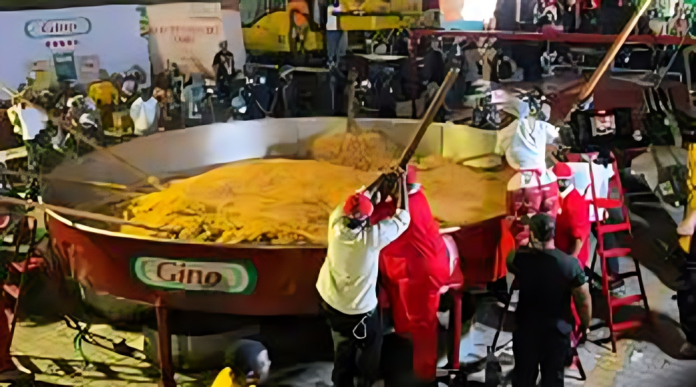When Hilda Baci broke her second Guinness World Record for cooking the largest pot of jollof rice, Nigerians cheered, cameras flashed, and the world once again took notice of her culinary audacity.
But after the applause, the real question began to simmer: what happens to the pot?
In true Nigerian fashion, the first instinct was commerce. Auction it, some said. Sell it to the highest bidder, others suggested. After all, it’s no ordinary pot; it’s a Guinness-certified vessel of history, fame, and global headlines. Why not squeeze money out of it?
But Hilda said no.
“So many people have asked about that pot… but I think that that one is a symbol of a lot of beautiful things. It’s a symbol of history. It’s a symbol of faith. It’s a symbol of innovation… Right now, I can tell you we’re definitely not going to auction it. We’re not going to sell it. We’re going to make sure that as many people as possible get to see it in its glory,” she said.
And in that simple declaration, Hilda transformed what could have been a quick cash-out into something far weightier: a cultural artefact.
This pot is bigger than any realistic kitchen

At face value, the pot is metal, fire-stained, and oversized, just a tool to cook rice. But like the Benin Bronzes or a masquerade mask, it has been elevated beyond function. It carries the imprint of ambition, endurance, and collective pride.
The very act of refusing to sell it is a refusal to trivialise it. In a society that constantly pressures creators to monetise their every achievement, Hilda chose preservation over profit. She chose story over sale.
A museum piece in the making
Imagine walking into a Nigerian museum twenty years from now and seeing that pot displayed under glass. Children would gather around it, not because of the steel itself, but because of what it represents: one woman’s audacity to turn cooking into history.
In that moment, the pot transcends kitchenware. It becomes memory. It becomes a story. It becomes a national identity on display.
This is what Hilda seems to intuitively understand when she said, “We’re going to put it back in the form that it originally was… you’ll find it maybe on your way to work or in a museum somewhere.”

















